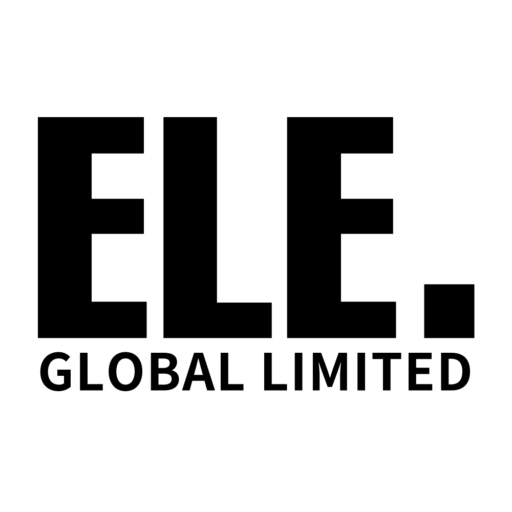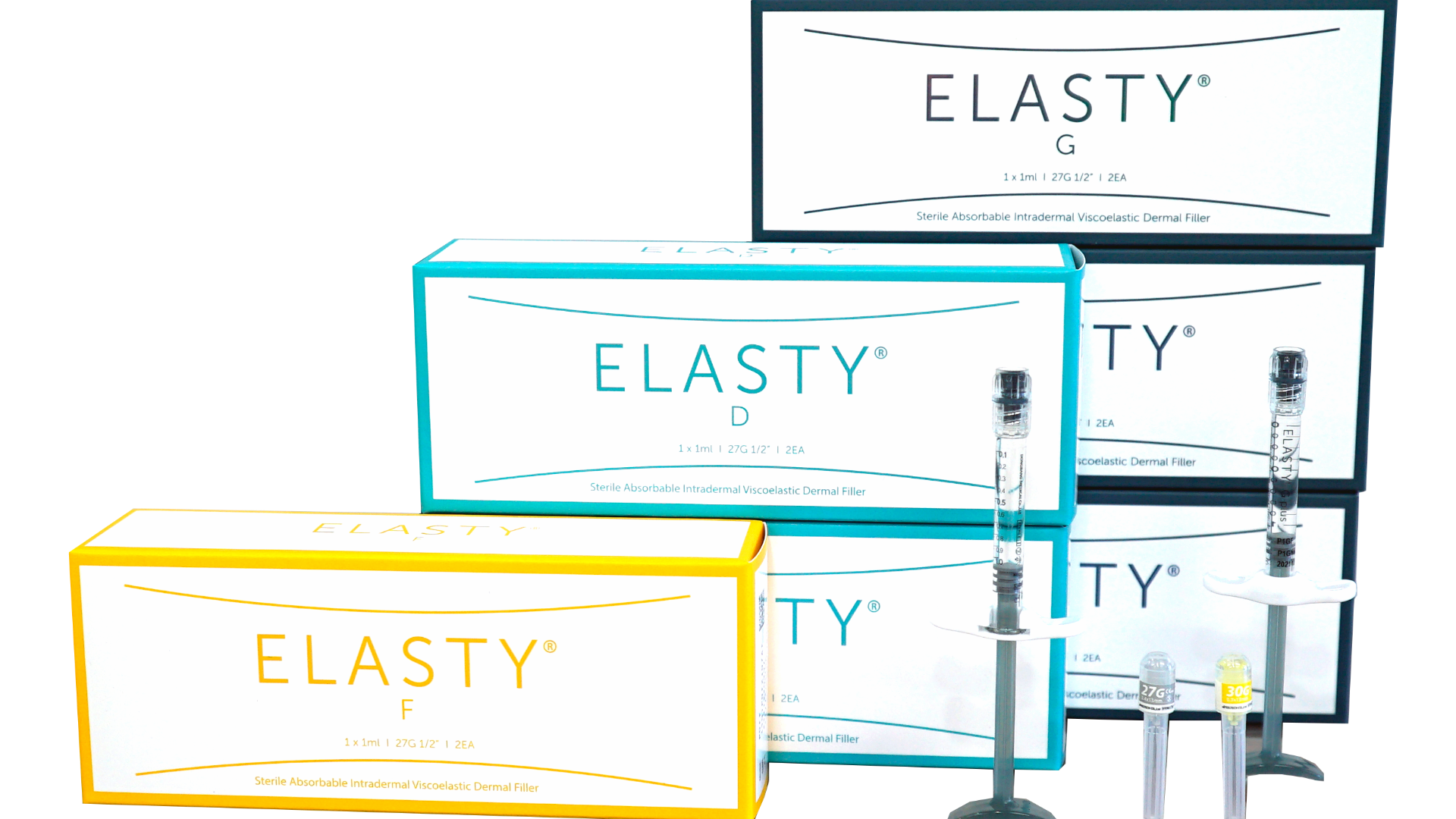has grown into one of the pioneer products that answer the growing demand for minimally invasive anti-aging treatments in aesthetic medicine. This is a novel type of dermal filler that guarantees safety and efficiency for treatments of fine lines and wrinkles with natural-looking results. The next section will provide a more detailed look at properties, applications, and professional considerations.
1. Overview of Elasty G Plus
Elasty G Plus represents a new generation of dermal fillers manufactured with state-of-the-art cross-linking technology, specially developed to treat superficial to mid-depth wrinkles, improving the skin’s hydration and elasticity.
Composition and Biochemical Properties
-
Hyaluronic Acid Concentration: Each syringe contains 24 mg/mL of non-animal-derived hyaluronic acid of very high purity. It is highly concentrated enough to give perfect viscoelasticity and cohesiveness, which is important for long-lasting correction of fine lines without lumpiness.
-
Cross-Linking Technology: With the use of BDDE (1,4-butanediol diglycidyl ether) as a cross-linking agent, Elasty G Plus attains a homogeneous gel matrix that is more resistant and less prone to enzymatic degradation.
-
Particle Size Distribution: Ultra-fine particle size of 100 to 150 microns was calibrated for dermal layers to ensure ease of application, smooth, and even dispersion with no interference with facial dynamics.
Clinical Indications
-
Fine Line Reduction: Indicated for periorbital lines, perioral lines, and superficial glabellar lines.
-
Hydration and Elasticity Improvement: Since it is hydrophilic, it attracts up to 1000 times its weight in water, therefore contributing to skin fullness and firmness.
-
Combination Therapy: It is often combined with the botulinum toxin treatments of dynamic wrinkles in the same sitting for both static and dynamic wrinkles.
2. How It Minimizes Wrinkles
The mechanism of action of Elasty G Plus in wrinkle reduction is based on its precise rheological properties, with a focus on tissue integration and bio stimulation.
Rheological Advantages
-
Viscoelastic Balance: Having the G’ value in the range of 450–500 Pa, Elasty G Plus is optimized for elasticity and moldability in order to adapt perfectly to areas of dynamic muscle activity without migration.
-
Cohesivity Index: High cohesivity ≥ 90% maintains the integrity of the filler against mechanical stress, sustaining structure even in highly mobile areas like the periorbital region.
Tissue Integration
-
Layer-Specific Injection: The present invention is designed for application in the mid-to-superficial dermis. It integrates perfectly into the surrounding tissues without evidence of the Tyndall effect—a bluish discoloration that is commonly associated with poorly adapted fillers.
-
Volume Retention: Volumes retained after six months of treatment are shown to be 80–85% in clinical trials, which is superiority for the same indications against other fillers.
Biostimulation of Skin Cells
-
Fibroblast Activation: It has been shown that Elasty G Plus activates dermal fibroblasts, which induce production of endogenous collagen and elastin. That actually means a twofold effect: meeting the urgent aesthetic needs and achieving a benefit in the long term for the health of the skin.
3. Safety Features Explained
Extensive clinical trials, as well as real-world applications, have thoroughly validated the safety profile of Elasty G Plus.
Manufacturing Standards
-
ISO and CE Compliance: Elasty G Plus is manufactured in ISO 13485-compliant and CE-certified facilities to ensure strict quality assurance that warrants sterility and biocompatibility.
-
BDDE Residuals: BDDE residual content is below 2 parts per million, far below the safety threshold established by the regulatory authorities, significantly reducing the risks of cytotoxicity.
Adverse Reaction Rates
-
Hypersensitivity Reactions: It results in a very low, less than 0.5%, incidence of mild adverse events in the form of local swelling and erythema, both of which will completely resolve in less than 48 hours during clinical follow-up in more than 2000 patients.
-
Granuloma Formation: Advanced purification process reducing protein impurities to minimize the risk of delayed inflammatory nodules to less than 0.1%.
Longevity and Biodegradability
-
Enzymatic Resistance: The BDDE cross-linking enhances resistance to hyaluronidase. This allows Elasty G Plus to maintain structural integrity up to 9–12 months, according to the area of treatment.
-
Safe Degradation: It degrades naturally into water and carbon dioxide without leaving harmful tissue residues.
4. Ideal Candidates for Use
Elasty G Plus can be used on a wide range of patient populations. However, proper selection of the patient can optimize efficacy and safety of the product.
Demographic Suitability
-
Age Group: Generally indicated in patients belonging to the 30–55-year-old group with mild to moderate static wrinkles. Patients in their 40s tend to see the most optimal results, with a 75% reduction in the severity of the wrinkles within two months.
-
Skin Types: Studied in Fitzpatrick skin types I–VI; similar efficacy and no increased PIH (post-inflammatory hyperpigmentation) was observed in darker skin types.
Contraindications
-
Pregnancy and Breastfeeding: Although the filler is biocompatible, due to the scarcity of safety data during pregnancy or lactation, it is contraindicated.
-
Autoimmune Conditions: Patients with active autoimmune disorders might have unpredictable inflammatory responses. A thorough history will be required.
5. Steps for Best Application
The use of Elasty G Plus requires knowledge in facial anatomy and proper modes of injection.
Pre-Treatment Protocols
-
Consultation and Mapping: The practitioner has to consider wrinkle depth and skin quality, in addition to the patient’s expectations. Digital imaging may be used to outline the injection sites for further accuracy.
-
Anesthesia: Even though there is lidocaine in Elasty G Plus to soothe the patient, additional topical anesthesia may be useful on sensitive areas, such as 4% lidocaine cream.
Injection Techniques
-
Linear Threading: Ideal for linear wrinkles, such as nasolabial fold; uniform distribution of product is achieved.
-
Microdroplet Technique: This method is used in the sensitive area of the lips or infraorbital to avoid overcorrection.
-
Layering for Volume: Deeper wrinkles may need to be layered in the subdermal plane for better volumization and to avoid surface irregularities.
After-Care
-
Compression and Ice Packs: These reduce the post-procedure swelling and bruising that occur in less than 3% of patients.
-
Restrictions of Activity: It is advisable to restrict alcohol intake, avoid excessive sun exposure, and strenuous activities for the initial 48 hours following the treatment as a part of after-care for best results.
6. Comparison of Popular Fillers
It has several advantages compared to other dermal fillers which make it preferred for some indications.
Juvederm vs. Elasty G Plus
-
Durability: While Juvederm Ultra XC lasts for 6–8 months, Elasty G Plus extends up to 9–12 months.
-
Elasticity: Elasty G Plus enjoys a higher G′ value and thus is more suitable for dynamic areas such as the nasolabial fold area.
-
Cost-Effectiveness: It costs on average 20–30% less and is hence more available to patients.
Restylane vs. Elasty G Plus
-
Particle Size: Its larger particle size at 200–250 microns makes the use of Restylane contraindicated in superficial layers, and where smaller-grained particle size is contained in Elasty G Plus, versatile applications are possible.
-
Side Effect Profile: Restylane has a slightly higher incidence rate of post-procedure swelling—up to 6% of cases—whereas it is 3% with Elasty G Plus.
7. Long-Term Effects to Know
Far beyond the immediate wrinkle correction, Elasty G Plus exerts a multitude of subtle and long-term consequences.
Biostimulation and Skin Remodeling
-
Collagen Induction: The clinical research investigations indicate that two treatments performed six months apart may achieve a 30% increase in dermal collagen density, which is sufficient to cause significant skin firming.
-
Improved Hydration: Improved hydration of the skin by patients for as long as 12 months is attributed to the high water-retention capability of the filler.
Lower Maintenance Frequency
-
Results are long-lasting: Elasty G Plus requires one maintenance procedure every 9–12 months, compared to other fillers, which may require repeated touch-ups after 4–6 months. This lowers the overall comparative cost and procedural burden on patients.
Patient Satisfaction Metrics
-
Global Aesthetic Improvement Scale (GAIS): In the multicenter study of 1500 subjects, over 90% of subjects reported their results to be “excellent” or “very good





